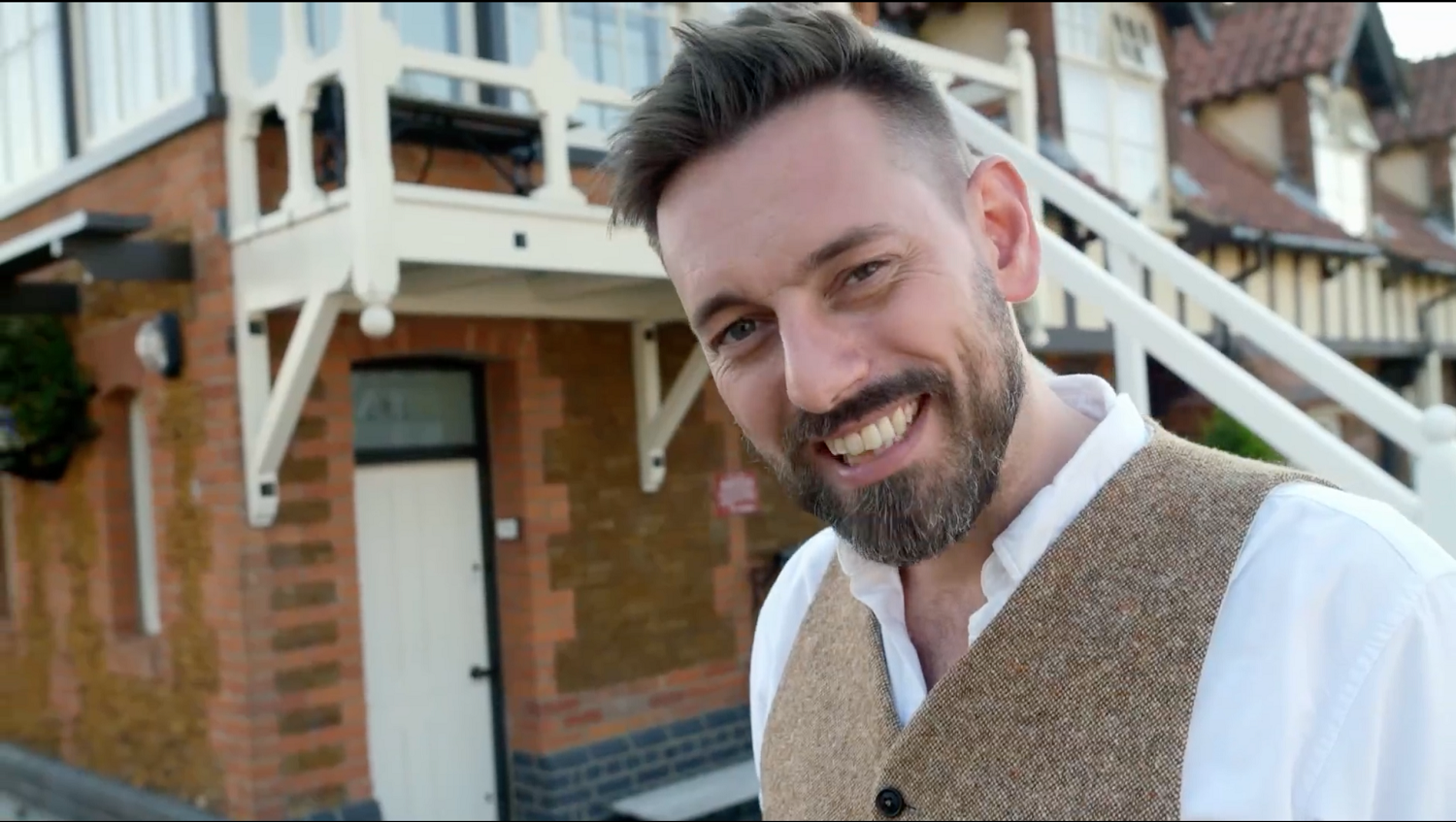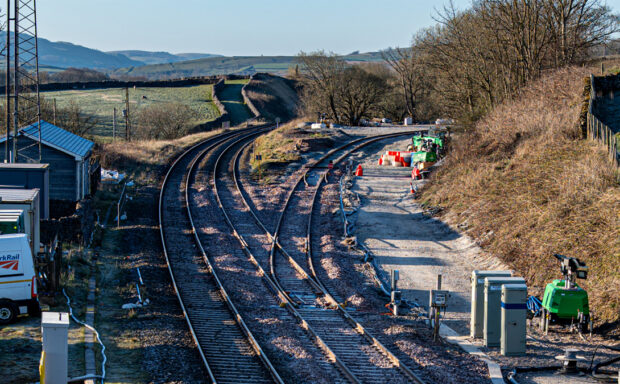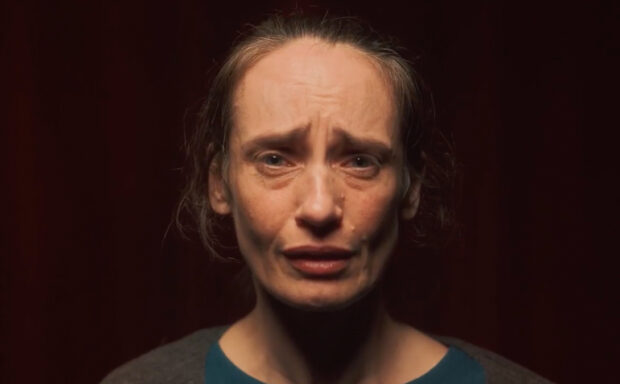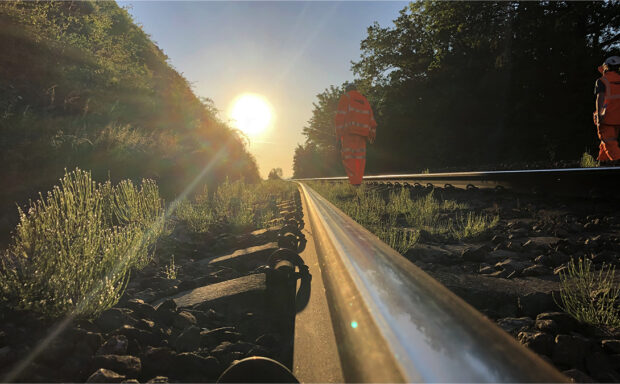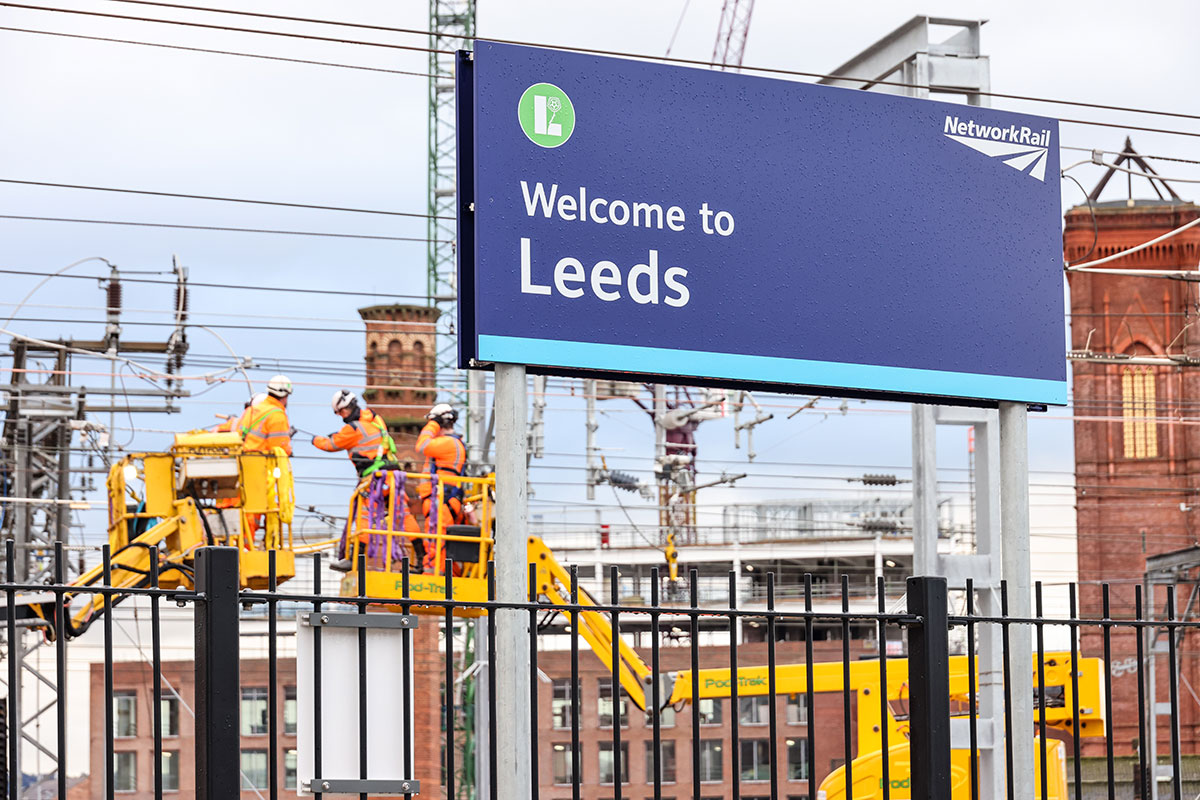Growing up in Metro-land – the leafy suburbia served by the London Underground’s Metropolitan line – Tim Dunn’s track as one of our best-known railway historians had already been laid.
His grandparents met as schoolchildren waving to one another across platforms of the Metropolitan line – the same route his parents would meet on years later. From the age of seven, Tim would celebrate each birthday by riding in the cab of the Met No. 1 steam locomotive from the old Metropolitan Railway.
Three decades later, Tim is the star of his own television series on Yesterday celebrating the extraordinary architecture that makes up much of our railways.
The Architecture the Railways Built was pitched at London St Pancras International station, planned in a railway arch and filmed at heritage railways, signal boxes and royal waiting rooms across the UK and Europe.
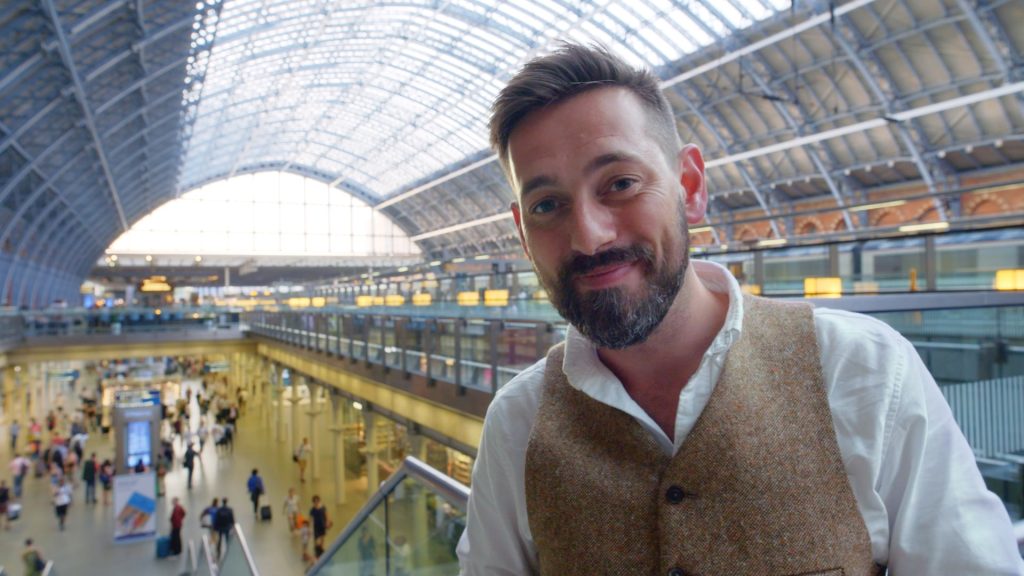
You said your childhood was intertwined with the railway. What was that like?
I grew up loving the railway. I was brought up with literally hundreds, if not a couple of thousand, of train books that were actually given to me by my grandfather. My education was kind of framed by railway books. I learned about the world through the railway lines and its architecture and the trains that ran on them.
How did you come to make a career out of your love for the railway?
I did a geography degree and majored in heritage and the history of building and networks within that. Then I had a career in marketing just to learn about how do you tell a story? How do you take an object or an issue and tell a story to bring other people in and understand it better?
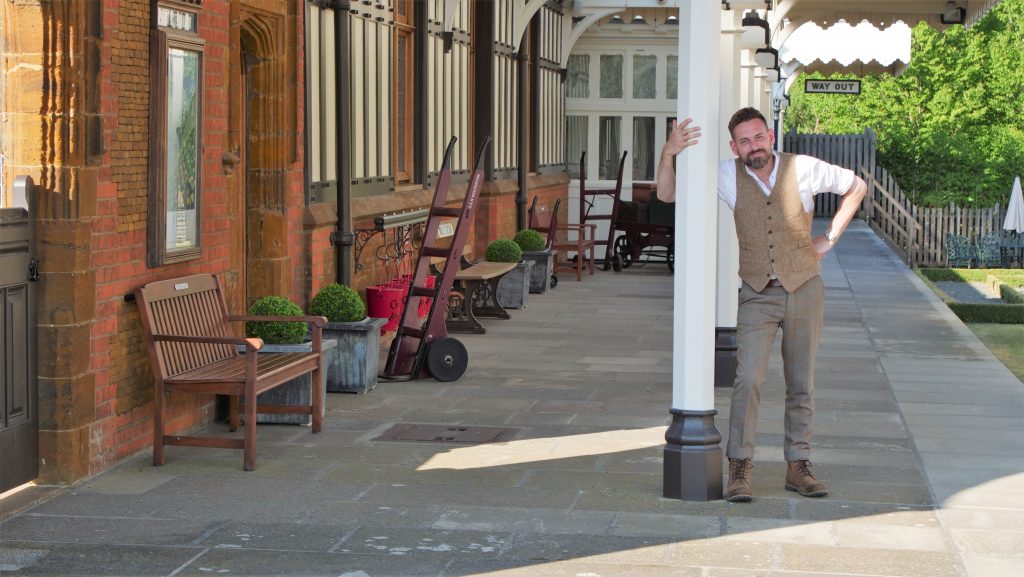
I ended up being a trustee of museums and things and curated a couple of exhibitions about the history of the railway… and so from that, I ended up getting a programme a couple of years ago called Trainspotting Live on the BBC… It got people talking for the first time about their hidden love of trains.
On the second morning, we were just inundated by people… on their station platform tweeting the number of their train. It just lifts your spirits perhaps on an otherwise dull commute sometimes… it was very silly and lots of fun.
To see someone’s face when they say, ‘I didn’t know that,’ it’s great. That’s great validation to me – ‘I didn’t expect to like that’.
In one of the episodes you visit Severn Bridge Junction, which is the world’s biggest working mechanical signal box – and part of Network Rail’s everyday infrastructure. You said it was a childhood ambition to go there…
I’ve always liked signal boxes. I’ve always found them fascinating. Not necessarily the signalling system but I liked this idea that there are people inside controlling the movement to everything around.
From the age of 11, I used to work at Bekonscot Model Village, which is a model village in Buckinghamshire… I always looked at Severn Bridge Junction going past… looking at this ridiculous box that is so tall and thinking, ‘what is going on up there? Who’s up there? Who are these shadowy figures?’
It became a running joke on Twitter, it became just hilarious – what is this? You’d get 100 replies.
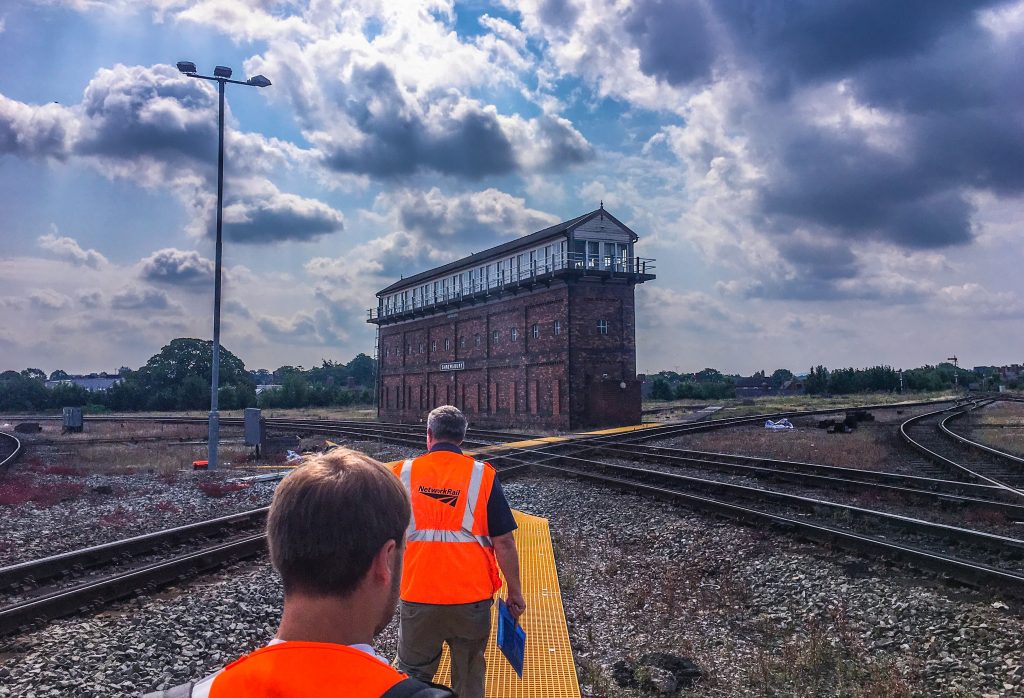
Because signal boxes are these very odd bits of architecture, they are basically machines that have been shrouded in a wrapper and they are this very weird bit of Victorian machinery that so many of us depend on every day…
Having controlled the little ones when I was a kid, I wanted to know how the big one worked… The chance to go and see the absolute peak signal box or peak historic signal box, that is it.
[Our camera] missed it… a steam train came through… they released it from Crewe an hour earlier to get to a special event… we were walking up from the box and the train came past. I was gutted about that.
Gallery: Exploring Severn Bridge Junction – the world’s biggest working mechanical signal box – was a childhood dream of Tim’s
You’ve had some fantastic behind-the-scenes access during your career. What’s been your favourite?
Whether it’s going to some of the secret tunnels underneath [London] King’s Cross station in the underground section with [Transport for London], whether it’s being in the back cab of the InterCity 125 – the last one leaving from [London] Paddington station last May with Great Western [Railway] – or seeing behind the scenes with people who know what we’re looking at to tell a deeper story and have these tours…
Severn Bridge Junction will go down in my last of childhood moments that I never thought I’d get. “Did we just do that?”
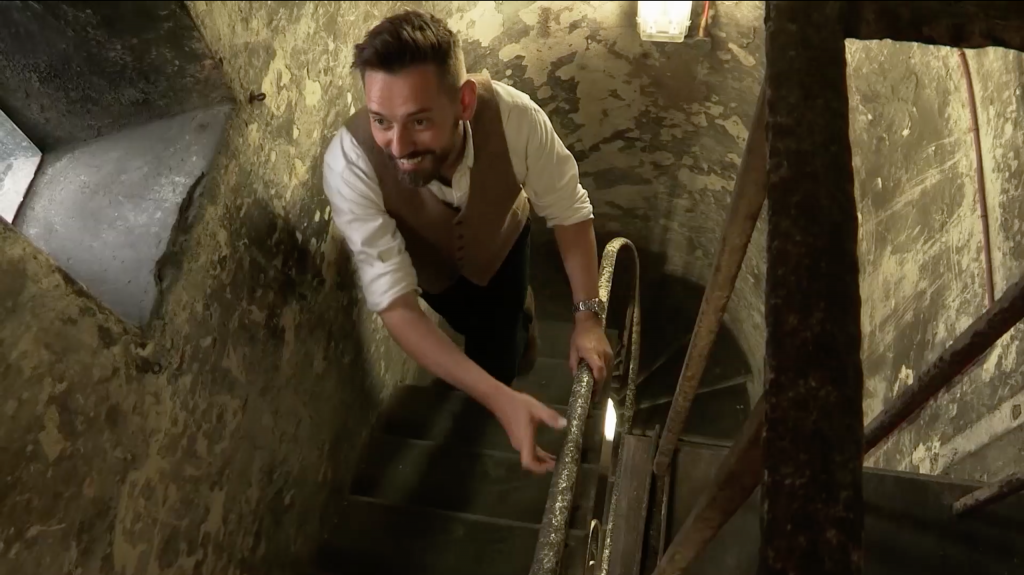
King’s Cross station – going up into the clock tower and onto the roof of King’s Cross station [because a member of staff] wanted to show us some of the finer points of the building… We didn’t actually ask about the clock tower, to have that volunteered as something to do by one of the Network Rail members of staff at King’s Cross.
The chief heritage adviser at St Pancras, HS1, Josie Murray, she said, “You can’t come here without going onto the roof”… Looking down at the Eurostar trains below… looking through the glass, she said, “Don’t worry, it can’t shatter – I’ve tested it”.
The safety crew saying, “Do you want to come up on the pointed apex of the roof?” No. I got up a little way and said, “I think I’m done here”.
The Ffestiniog Railway is a special line – what was filming that like?
The Ffestiniog Railway was a particularly special episode for me… It’s a whole system, it was the first kind of major narrow gauge railway line built for this kind of purpose on a massive scale. The fact it’s one long gradient all the way down to enable these gravity wagons to come down.
And the buildings that have got a similar house style along, you see the same materials throughout, the same design style, the same window, all sort of from the same stable.
This little engine has been going into its little house every night over three centuries. It’s just lovely.
What I learnt about the Ffestiniog… and I had no idea about, I didn’t know Network Rail sends loads of its apprentices to go and work on the line… I didn’t realise Network Rail had so many arms of it and other ways it works with other organisations beyond Community Rail, going into communities and supporting other organisations that we might not immediately think are part of it.
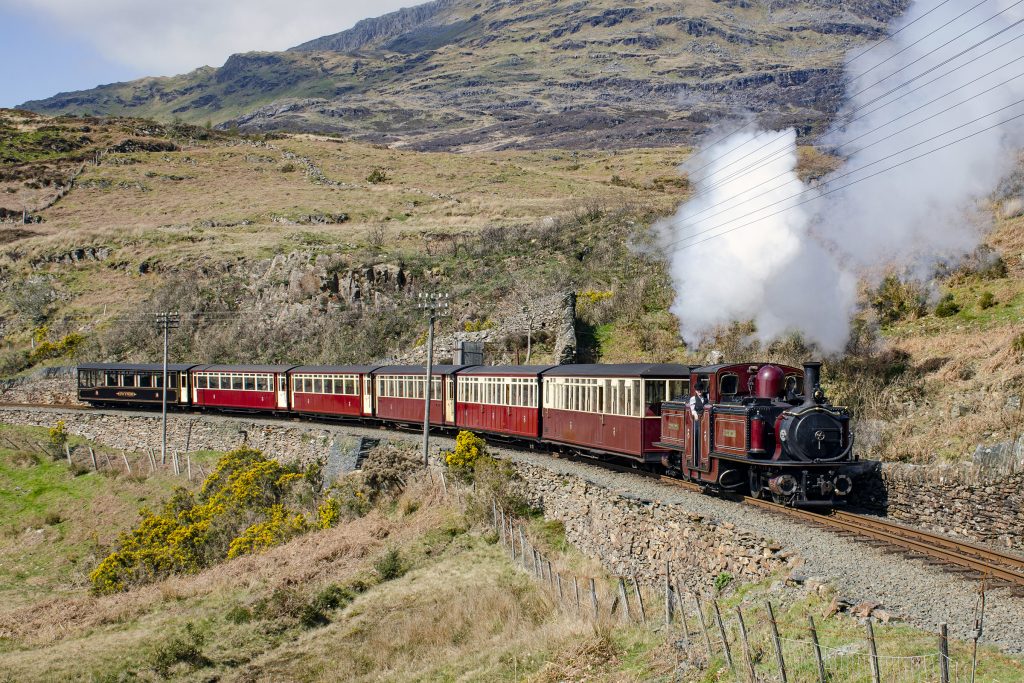
Did anything surprise you while filming the series?
The biggest surprise was people’s desire to show and tell… and the passion and the knowledge of the history, of the things people are doing and are working across the network…
Whether it’s Network Rail or steam railways or historic buildings, people were so generous with their time and their knowledge.
Any favourite details?
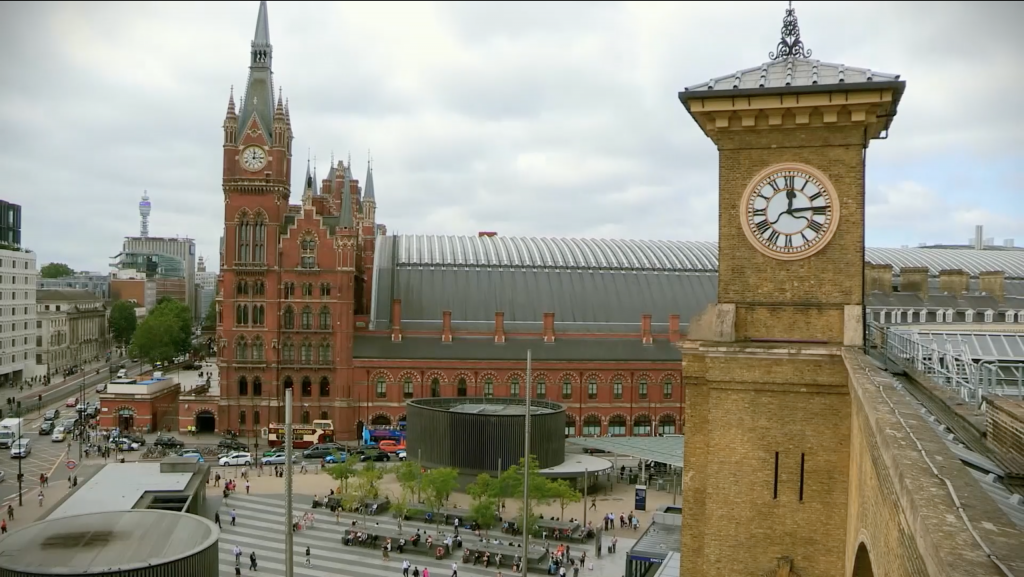
There were specific things like the King’s Cross clock, which is actually controlled by a tiny box.
And I didn’t know, up at St Pancras booking office, there are actually these carved stone motifs on the very top of the booking office wall from 1860-something when it first opened of the telegraph operator, a guard and a loco driver and they’re carved at the top…
Or going to Shrewsbury, where they showed us all these gargoyles on the side of the building are caricatures of the stonemasons and their bosses working on the station at the time. The surprises kept coming.
I hope people off the back of this take a second look and look up or look down and go and hunt out something or take some joy from the stuff we’ve got around us… There’s often beauty in the boring and you often find beauty in detail.
Read more:
The Architecture the Railways Built – Severn Bridge Junction
The Architecture the Railways Built – Barmouth Viaduct
The Architecture the Railways Built – London St Pancras International
The Architecture the Railways Built – Ffestiniog Railway
The Architecture the Railways Built – Ribblehead Viaduct
